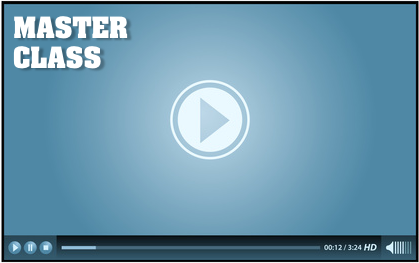How your startup can sell to businesses
This guide is based on Mixergy’s interview with Chris Savage.
After working for ten months on an artists’ job board that had no users and made no money, Chris Savage built a successful company that enjoys recurring monthly income. It was all done by marketing to businesses, so we invited him to teach you how to do it.
Chris Savage is the founder of Wistia, which provides video marketing tools for businesses.
Here are the actionable highlights from the interview.
1. Identify a target audience that will pay for your product to verify there’s a demand
Chris decided that Wistia should focus on businesses that don’t often use video after entrepreneurs asked him for help and he saw that their businesses had money to spend on video products.
- Take Action:
- “Date” different kind of customers to find a niche that loves what you make and is happy to pay you well.
2. Learn where your customers spend their time to market to them in those places
Chris found out that his first customer read the Boston Globe and had never heard of Hacker News, which suggested that focusing his marketing on the techies at Hacker News was a mistake.
- Take Action:
- Ask your customers what publications they read and what conferences they attend.
3. Look at complementary and competing products to get ideas and set prices
Chris realized that Wistia could offer analytics for video like Constant Contact does for email and that $100 a month was a reasonable price.
- Take Action:
- Look at other products that your customers are likely to buy, see if you could offer related features, and pay attention to your competitors’ pricing.
4. Use analytics to see what part of your sales pitch is effective and what to cut
Chris learned from analytics that only 20% of people watched the crucial part of a video he distributed, and he was able to identify the people who didn’t and direct them to the most important information in the video via email.
- Take Action:
- Use tools like Google Analytics to see how customers interact with your product pages or marketing videos.
5. Explain how your product adds value in concrete terms to attract more customers
One customer used Wistia to share a sales demo video, and he saved two to three hours a day that he would have spent doing demos in person.
- Take Action:
- Calculate how much time and money your customers would lose if they didn’t have your product.
6. Start selling even before your product is finished to get customers signed on earlier
Wistia sold an early version of its product that allowed the customer to invite people by email to watch videos even though it didn’t yet support embedding or playlists.
- Take Action:
- Offer products for sale as soon as they work well enough to provide value, even if they aren’t polished yet.
7. Be upfront about the size of your company to earn more credibility
Wistia’s customers were more understanding when they knew they were dealing with a 12-person organization.
- Take Action:
- Make sure your website and promotional materials don’t give the impression that your company is larger than it is.
8. Do crazy things for customers (even if they don’t scale) to earn respect
Chris flew to L.A. for a meeting with HBO despite having a $15-per-week food budget.
- Take Action:
- Take advantage of possible opportunities, including ones that sound wild.
9. Make your product easy to use to get more sales
Chris made Wistia’s product much easier to use after his girlfriend asked where the upload button was.
- Take Action:
- Ask friends to test your product, and use their feedback to smooth any rough edges.
10. Offer a demo to remove risk for prospects and make them more willing to try it
Wistia allowed first-time website visitors to follow instructions like “pause” and “rewind” while watching a video and then to see a visualization of what they’d just done.
- Take Action:
- Make a demo available that doesn’t require people to give their names, email addresses, or other sensitive information.
Want to make sure you get results?
Watch the full interview now
Written by Sarah Brodsky, based on production notes by Jeremy Weisz

